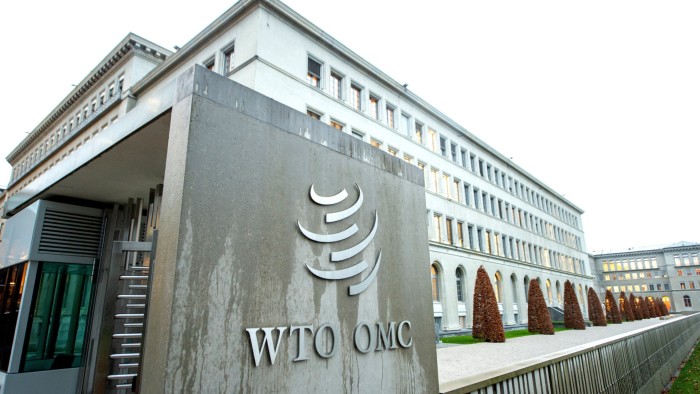Risks grow for investors as a new economic framework emerges

Roula Khalaf, Editor of the FT, selects her favourite stories in this weekly newsletter.
The writer is managing director and head of economic research for global fixed income and macro at Citadel
Issues such as climate change, energy independence and national security plans are piling up for investors — and no one is certain where the pieces will fall.
Before the global financial crisis of 2008, the economic policy framework was largely more transparent and predictable: manage demand by stabilising inflation while controlling public debt. It required fewer policy instruments and benefited from expanding globalisation and growing capital flows. It was a strategy that blossomed under the World Trade Organization’s rules-based system.
But faced with a plethora of monetary, fiscal, regulatory, trade and industrial policies, that framework is now under pressure and it is on a collision course with the forces of rising nationalism and regionalised interests. As Mario Draghi warned during a speech in February, the disjointed policies emerging as a result could have unexpected and dire consequences.
“The transitions that our societies are undertaking, whether dictated by our choice to protect the climate or the threats of nostalgic autocrats, or by our indifference to the social consequences of globalisation, are profound. And differences between possible outcomes have never been so stark,” said the former prime minister of Italy and president of the European Central Bank.
Over the medium term, investors will have to deal with vast and sustained uncertainty driven by three critical factors. First, the haphazard grouping of multiple policy objectives into one strategy. For example, the White House has invested heavily in initiatives such as the Inflation Reduction Act and the Chips and Science Act to support domestic production and create jobs, directly promoting the linkage between the US’s domestic prowess and its international competitiveness.
This transformation towards blended policymaking is one we see unfolding in many countries. But the aggregate result for investors has the potential for prolonged macroeconomic and financial volatility.
Take Germany’s recent “debt brake” fiasco, for example. Its rigidity in imposing limits on budget deficits halted existing plans to modernise the domestic economy, including addressing climate change. And in the US, the IRA showcases the potentially unbridled reach of an expansive policy. While admirable in concept, such unwieldy and multi-faceted programmes can often have unproductive results.
The second big overall risk is that a myriad of such policy measures — from trade tariffs to tax to asset purchases — are deployed together without a comprehensive assessment. A lack of synergy can lead to unexpected outcomes. For instance, the subsidies and public investment associated with climate transition and energy independence may require greater tolerance for inflation and higher public debt.
The impact of blended policy is not always negative. In the past year, subsidies and price caps were used to protect households and businesses from energy price increases — but they also unwittingly helped central banks anchor inflation expectations. Conversely, the cost of sanctions and trade restrictions is probably underestimated, and it is a problem that could grow despite the US’s “small yard, high fence” strategy to keep only a small swath of the technology landscape walled off from competition, namely China.
Finally, the third overall big risk is that citing defence as the focus and foundation for monetary and fiscal strategies opens the door to over-reach and unpredictability. Rerouting supply chains to allied countries, for instance, may avoid disruption from political and economic shock, but it is short-sighted in its approach, if not inconsistent and disorienting. Uncertainty is further introduced into global supply chains with the growing use of tariffs to gain leverage on non-trade related issues such as human or labour rights. Considering this, it’s not hard to imagine companies exercising excessive caution when making investment decisions in such a pervasively volatile environment.
Notwithstanding these transformations, the global economy has shown resilience, even when tested further by a pandemic and jolting energy prices. However, it is far from clear how much more uncertainty the system can bear.
We confront these challenges against the headwinds of still-elevated inflation and record-high public debt, conditions that lower the tolerance for mis-steps. Now more than ever, the importance of solid policy frameworks and stable institutions cannot be overstated.
Comments